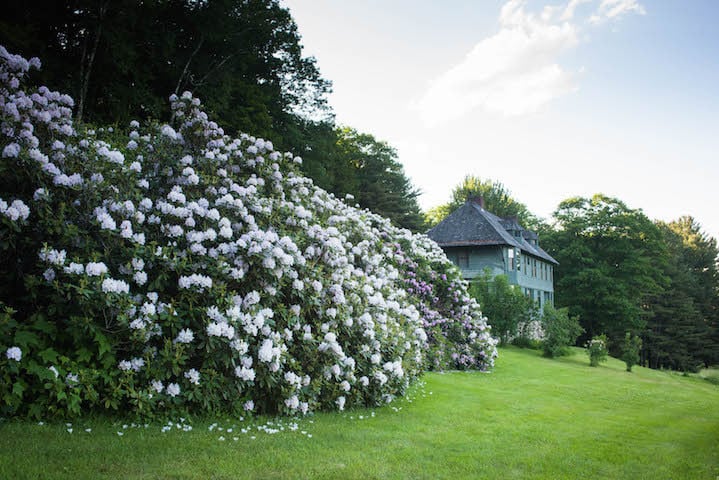
DUMMERSTON, Vt. – The Landmark Trust USA, a nonprofit historic preservation organization, invites the public to tour Naulakha, the Dummerston house and gardens of author Rudyard Kipling.
The tours are available Sunday, June 6, from 1-4:30 p.m., and Monday, June 7, from 10 a.m.–4 p.m. Tickets must be purchased in advance and will support the organization’s nonprofit mission to bring new life to heritage buildings. The property’s beautiful rhododendrons are likely to be in full bloom at the time. The event will be held rain or shine and no dogs are allowed. RSVP online at www.landmarktrustusa.org/events.
As Covid safety measures, the tour will be self-guided with informational handouts, and visitors will be required to wear masks and observe social distancing.
Built for Rudyard Kipling in 1892, Naulakha is a National Historic Landmark. The famed author wrote “The Jungle Book,” “Captains Courageous,” and portions of the “Just So Stories” in this house. Much of Kipling’s original furniture remains, and the entire house has been meticulously restored and maintained in a style that matches the historic period when the house was built.
Naulakha sits at the top of a tree-lined hill, with sweeping views of the Connecticut River Valley. On the grounds are a tunnel of rhododendron bushes, gardens, a stone pergola, and a clay tennis court. Visitors can also tour Kipling’s Carriage House, another of The Landmark Trust USA’s historic vacation rentals, where Kipling’s coachman Matthew Howard lived, as well as the Barn Museum – once home to Kipling’s horses Nip and Tuck – that now serves as a mini-museum of his family’s life in Vermont.
“We look forward to welcoming the community to tour Rudyard Kipling’s historic estate and gardens,” said executive director Susan McMahon. “The annual rhododendron tour has been one of the Landmark Trust USA’s most popular events, and we’re glad to be able to welcome visitors again with safety precautions including masks and social distancing.”
The Landmark Trust USA preserves and restores historic properties through creative and sustainable uses for public enjoyment, education, and inspiration. Most of Landmark’s properties are available for short-term rental. The nonprofit selects properties based on architectural and historical merit, with current properties dating from the early 1800s to 1910s. The organization uses traditional skills and methods to restore these properties. Each stay at a Landmark Trust property supports the organization’s nonprofit mission, bringing new life to heritage buildings.